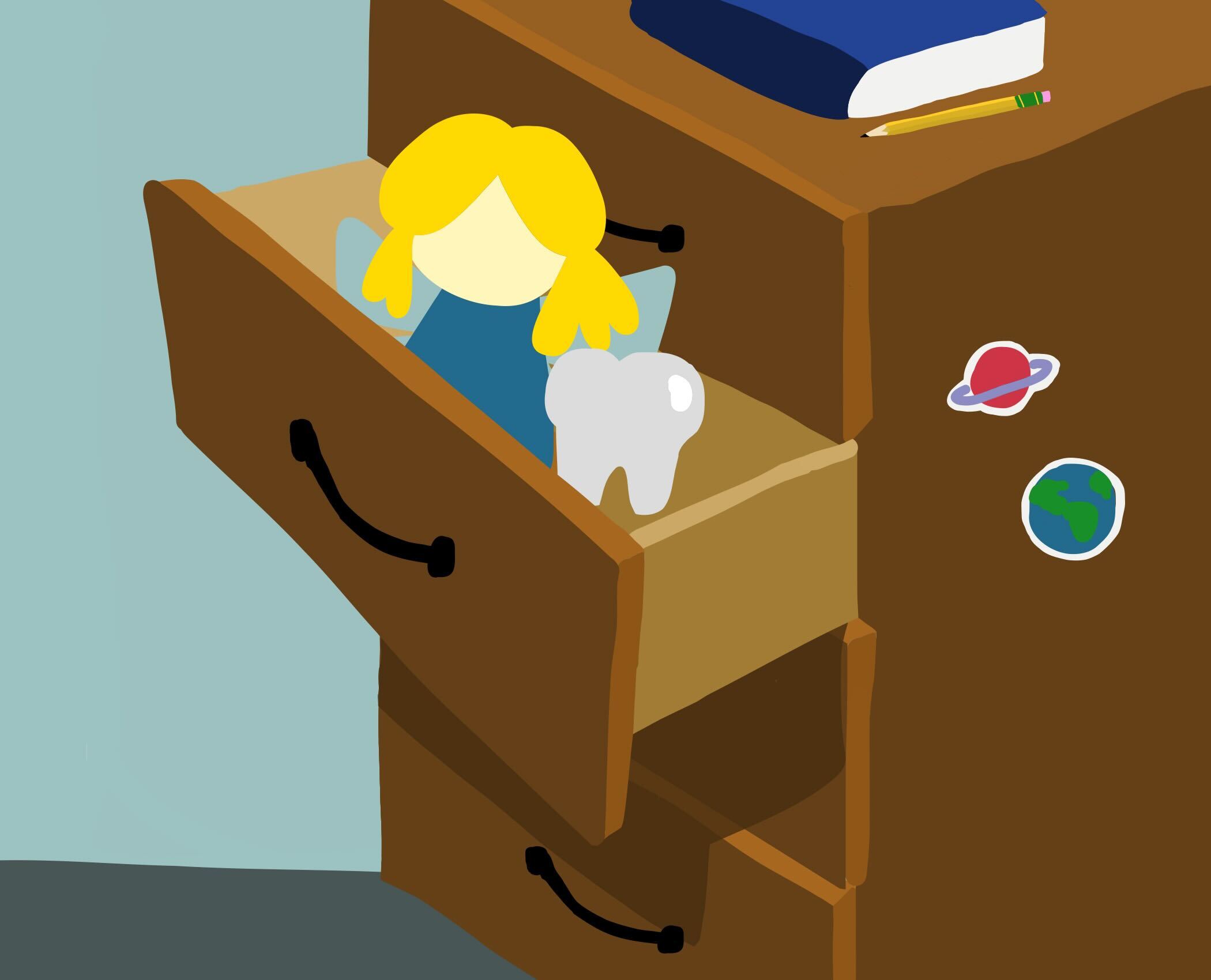Kaylee Chan explores memory and nostalgia by riffling through the ‘junk’ drawer with items that defined her childhood.
I lost my first tooth around second grade. I remember neither the occasion of the loss nor feeling a spot of emptiness over my gums for the first time. Even the timing of “second grade” is a speculation based on vague recollections and the time range teeth first start falling off. Any remembrance I do have of the salty tang of blood in my mouth and the sensation of new enamel breaking out from my gums is from my later experiences with losing my teeth, the most memorable of which happened without warning while chewing on a vitamin gummy nine years ago. That first moment, however, remains an enigma.
What I do recall is the giddy excitement of putting that first tooth under the bed that night, hoping for the Tooth Fairy to whisk it away and replace it with a dollar from wherever she stored her tooth payment reserves.
When I woke up with the tooth but no cash the next day, I complained about the Tooth Fairy’s missed visitation to my parents. Later in the day, however, the grievance was rectified when my mom told me she had found something tucked in the mattress of my bed. It was a dollar bill! The fairy had arrived after all.
The Tooth Fairy’s lack of diligence irked me a bit — was the dollar not supposed to be placed under the pillow, in exchange for the tooth? But my interrogation of it got no further than that.
That is where my dealings with the Tooth Fairy ended, with me electing to keep all my future lost teeth in a plastic condiment container instead of giving them up to the fairy otherworld. Not once did I question that I only had my mom’s word to go off of.
Looking back on it now, receiving the dollar from the “Tooth Fairy” was an apt microcosm of my young naiveté. After all, the Tooth Fairy was not the only childhood myth I unquestioningly accepted. I was also fooled, like many others, about the existence of Santa Claus. I knew it was implausible for a large bearded man to descend our chimney and fill our stockings before Christmas. I knew the logistics of him delivering gifts to every house in a single night, even with the help of flying reindeer, was simply not feasible. Ultimately, however, I never pursued that doubt to its natural conclusion. Even when my cousin, a year older, confided to me in hushed whispers her suspicion that it was our parents behind the gift giving every Christmas night, I scoffed at the notion.
In hindsight, my lack of inquisitiveness felt a bit troubling at times — I liked to think that I was a fairly perceptive kid, and that when such blatant falsehoods arose I would be able to dispel them easily. However, it took until the third grade for my illusion of Santa to finally break. It was my first trip to Hong Kong, and the first time we were not home for Christmas. “Does Santa come to hotels?” I asked. The answer was no. I imagined Santa arriving at our empty home halfway across the world from us, but the illusion no longer had any hold.
After that, the revelation that Santa was my parents’ fabrication all along came as less of a shock and more of a gentle arrival at knowledge that, in hindsight, was probably within me the whole time. The spell broke because I had gradually outgrown it.
While the myth of Santa Claus was one passed down to me as part of a greater holiday tradition, other lies I was told were genuinely meant to shield my innocence from the darker truths of the world. When I noticed my grandfather’s dog Buddy was conspicuously absent from his house, for example, he told me that Buddy was “on vacation.” I believed him. I pictured Buddy with his head lolling out the window of a plane, headed straight to Hawai’i where he’d gallivant on the beaches with other dogs. I vaguely remembered hearing about dogs being sent to puppy hotels on the radio — maybe that was his excursion!
After many other months of Buddy being nowhere to be found, I started to understand that the dog was long gone. Once again, it came as not so much of a shock as it was the gradual dawning of reality upon what I once perceived as the world. As new information emerged, as I grew more inquisitive, the world shifted bit by bit to fit new truths. It was easy to believe what I did back then, but it was somehow just as easy to correct those understandings.
In a way, losing those sanitized, yet fancifully rich perceptions of the world was a bit like losing teeth. One by one, the myths of childhood were dropped and more mature perspectives assumed their stead. However, as much as my childhood gullibility is a source of slight embarrassment in hindsight, I think it is something to be cherished. It was a sign of love from the adults in my life for them to let me live in a world where tooth — obsessed fairies existed and dogs went on vacation — even if only briefly.
